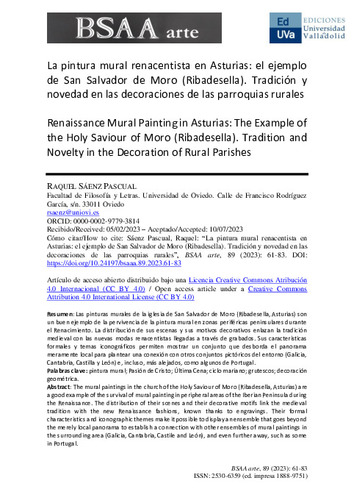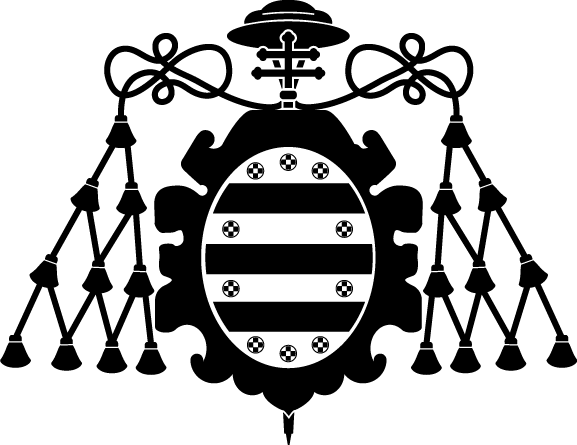La pintura mural renacentista en Asturias: el ejemplo de San Salvador de Moro(Ribadesella). Tradición y novedad en las decoraciones de las parroquias rurales
Otros títulos:
Renaissance Mural Painting in Asturias: The Example of the Holy Saviour ofMoro(Ribadesella). Tradition and Novelty in the Decoration of Rural Parishes
Autor(es) y otros:
Fecha de publicación:
Versión del editor:
Citación:
Descripción física:
Resumen:
Las pinturas murales de la iglesia de San Salvador de Moro (Ribadesella, Asturias) son un buen ejemplo de la pervivencia de la pintura mural en zonas periféricas peninsulares durante el Renacimiento. La distribución de sus escenas y sus motivos decorativos enlazan la tradición medieval con las nuevas modas renacentistas llegadas a través de grabados. Sus características formales y temas iconográficos permiten mostrar un conjunto que desborda el panorama meramente local para plantear una conexión con otros conjuntos pictóricos del entorno (Galicia, Cantabria, Castilla y León) e, incluso, más alejados, como algunos de Portugal.
Las pinturas murales de la iglesia de San Salvador de Moro (Ribadesella, Asturias) son un buen ejemplo de la pervivencia de la pintura mural en zonas periféricas peninsulares durante el Renacimiento. La distribución de sus escenas y sus motivos decorativos enlazan la tradición medieval con las nuevas modas renacentistas llegadas a través de grabados. Sus características formales y temas iconográficos permiten mostrar un conjunto que desborda el panorama meramente local para plantear una conexión con otros conjuntos pictóricos del entorno (Galicia, Cantabria, Castilla y León) e, incluso, más alejados, como algunos de Portugal.
The mural paintings in the church of the Holy Saviour of Moro(Ribadesella, Asturias) are a good example of the survival of mural painting in peripheral areas of the Iberian Peninsula during the Renaissance. The distribution of their scenes and their decorative motifs link the medieval tradition with the new Renaissance fashions, known thanks to engravings. Their formal characteristics and iconographic themes make it possible to display an ensemble that goes beyond the merely local panorama to establish a connection with other ensembles of mural paintings in the surrounding area (Galicia, Cantabria, Castile and León), and even further away, such as some in Portugal.
The mural paintings in the church of the Holy Saviour of Moro(Ribadesella, Asturias) are a good example of the survival of mural painting in peripheral areas of the Iberian Peninsula during the Renaissance. The distribution of their scenes and their decorative motifs link the medieval tradition with the new Renaissance fashions, known thanks to engravings. Their formal characteristics and iconographic themes make it possible to display an ensemble that goes beyond the merely local panorama to establish a connection with other ensembles of mural paintings in the surrounding area (Galicia, Cantabria, Castile and León), and even further away, such as some in Portugal.
ISSN:
Colecciones
- Artículos [37550]
Ficheros en el ítem





